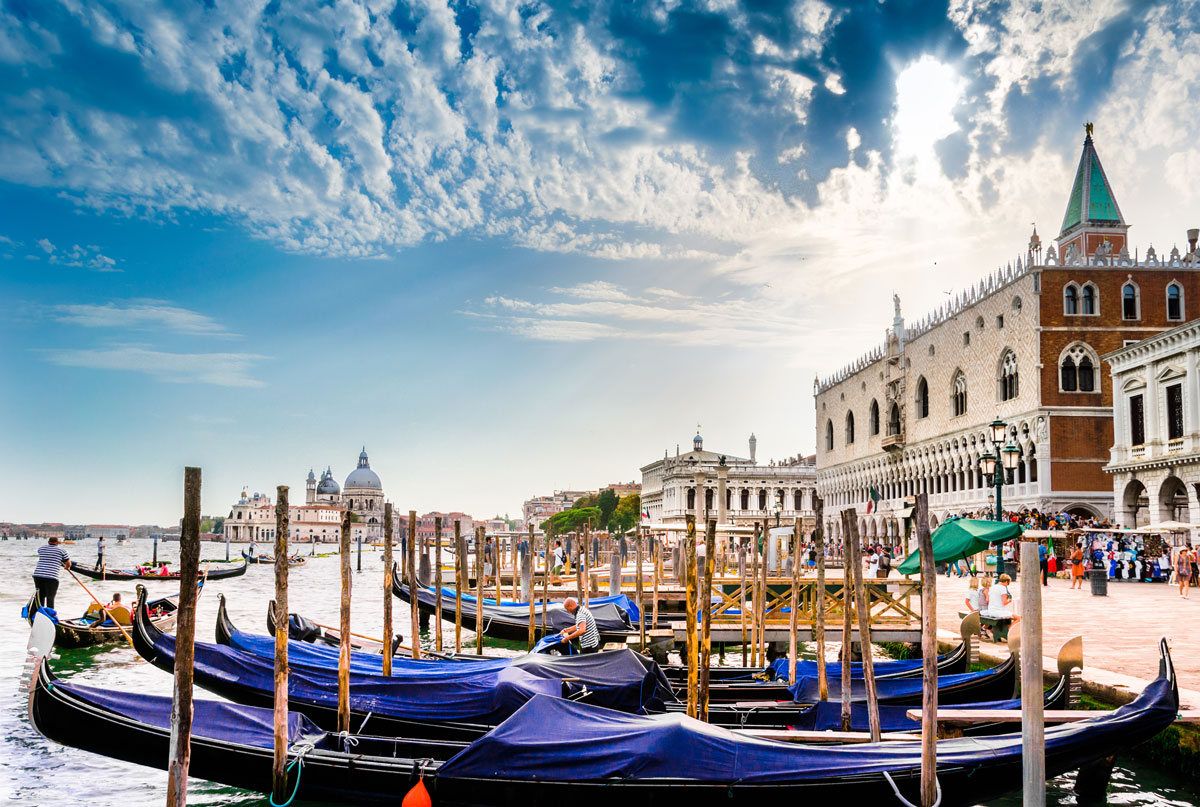Italy has long enjoyed the reputation of being one of the most historically significant countries in the world, and with good reason. This was the birthplace of the sweeping Roman Empire and it has seen war, triumph and the rise and fall of many emperors and rulers.
Fittingly, the Bel Paese (beautiful country) is home to a whopping 55 UNESCO World Heritage Sites – this is the highest number out of all the countries in the world and is tied for first place with China.

What’s the deal with UNESCO status?
UNESCO sites are accredited by the Convention Concerning the Protection of the World Cultural and Natural Heritage, which became part of the UNESCO General Conference in the 1970s. To be considered as a World Heritage site, a destination has to define its culture or country in some way, be it through archaeology, architecture, that natural environment, etc. In short – a UNESCO site somehow distils a certain part of a country’s way of life into a tangible reality. It allows you to taste, see, feel, smell and hear a part of what makes Italy Italy.
If you’re heading to Italy for a holiday and keen to sample a few of its choice UNESCO sites, you may want to include the following destinations on your itinerary.
NORTHERN ITALY
Milan is renowned for the Convent of Santa Maria della Grazie that is home to Leonardo da Vinci’s famous Last Supper painting, both of which date from the 1400s. Remember to book tickets before you go!
Venice was chosen as an architectural masterpiece – built on 118 separate islands, this structural marvel is home to many impressive buildings, including the Doge’s Palace and Basilica San Marco.
Cinque Terre is set amidst some of the world’s most dramatic coastal scenery and has been deemed iconic enough to receive UNESCO World Heritage status, due to its role in preserving a traditional way of life that has existed for millennia. In fact, the Italians are so serious about maintaining Cinque Terre’s natural and cultural wonders that the entire region has been declared a park – towns and all!



CENTRAL ITALY
Rome is filled to the rafters with ancient Roman monuments, including the famous Colosseum, Roman Forum, ancient markets, and Roman baths. In fact, you can barely make your way down a cobbled street without walking in the steps of a pope or emperor!
Florence has a dense historic centre that is crammed full of priceless artworks and monuments to the vibrant Renaissance period. This includes the baptistery and bell tower on the Piazza del Duomo, as well as Brunelleschi’s Dome at the gothic cathedral, not to mention the abundance of artworks by the greats like Da Vinci, Michelangelo, Botticelli and Giotto!
Pisa’s Field of Miracles, as the Piazza del Duomo is commonly known, is home to one of the best-preserved groupings of Romanesque buildings in all of Europe, including the world-famous Leaning Tower of Pisa!
San Gimignano used to be the epicentre of trade for pilgrims on their way to Rome along the Via Francigena route. Here modern-day visitors can enjoy the region’s distinct medieval atmosphere and marvel at the 14 surviving towers that form part of the walled hill town’s architectural heritage.
Siena was one of Europe’s most affluent cities between the 1100s and 1400s and still retains its classic Gothic appearance. Built as a work of art that was meant to merge seamlessly with the surrounding landscape, the entire city of Siena spreads out from the fan-shaped piazza, Piazza del Campo – a must-visit for any history buff.
Assisi is renowned as being the hometown of Italy’s patron saint, as well as the birthplace of the Franciscan order. This Umbrian hill town watches over many priceless medieval artworks and remains an important pilgrimage destination to this day.





SOUTHERN ITALY
Pompeii was buried under 6 metres of pumice and ash as the result of a cataclysmic volcanic eruption in 79AD and was rediscovered in 1599 as the result of an extensive excavation that revealed exceptionally well-preserved relics. This amazing find gave modern historians and archaeologists a deeper insight into the everyday lives of the ancient Romans, and today visitors are able to step back in time to walk among Roman homes, forums, amphitheatres and brothels that were literally frozen in time.
The Amalfi Coast comprises some of Italy’s most scenic stretches of shoreline and is home to a plethora of quaint medieval villages that hold countless works of art and architecture that hark back to its heyday as a maritime republic in the middle ages.
Sicily, along with sister island Sardinia, has six UNESCO sites between them, including Baroque towns, Greek and Roman sites and prehistoric sites – all of great archaeological importance.



The list of sites to see in Italy is absolutely endless! Add it to your list in every destination between sampling gelato and taking your morning coffee on the piazza! Have you visited a UNESCO site in Italy? Let us know about your experience in the comments!

2 responses to “Where to find the most fascinating UNESCO sites in Italy”
I have a group of 10 friends committed to a post tour – Amalfi Coast and Sicily beginning September 2, 2017 (Our Gate 1 Adriatic Sea tour ends on 9/1/2017). Does your company only offer fixed tour package or do you also provide service to assist us with detail logistic arrangement like transportation booking… etc. based on our own customized itinerary? Please advise.
Thank you!
Hello Cathy! We do organised tours to Europe, Egypt and Greece. We’re happy to assist all our passengers with airport transfers and pre- and post tour accommodation. 🙂 If you have any question, please send our team an email to info@expatexplore.com and we can answer all your questions.